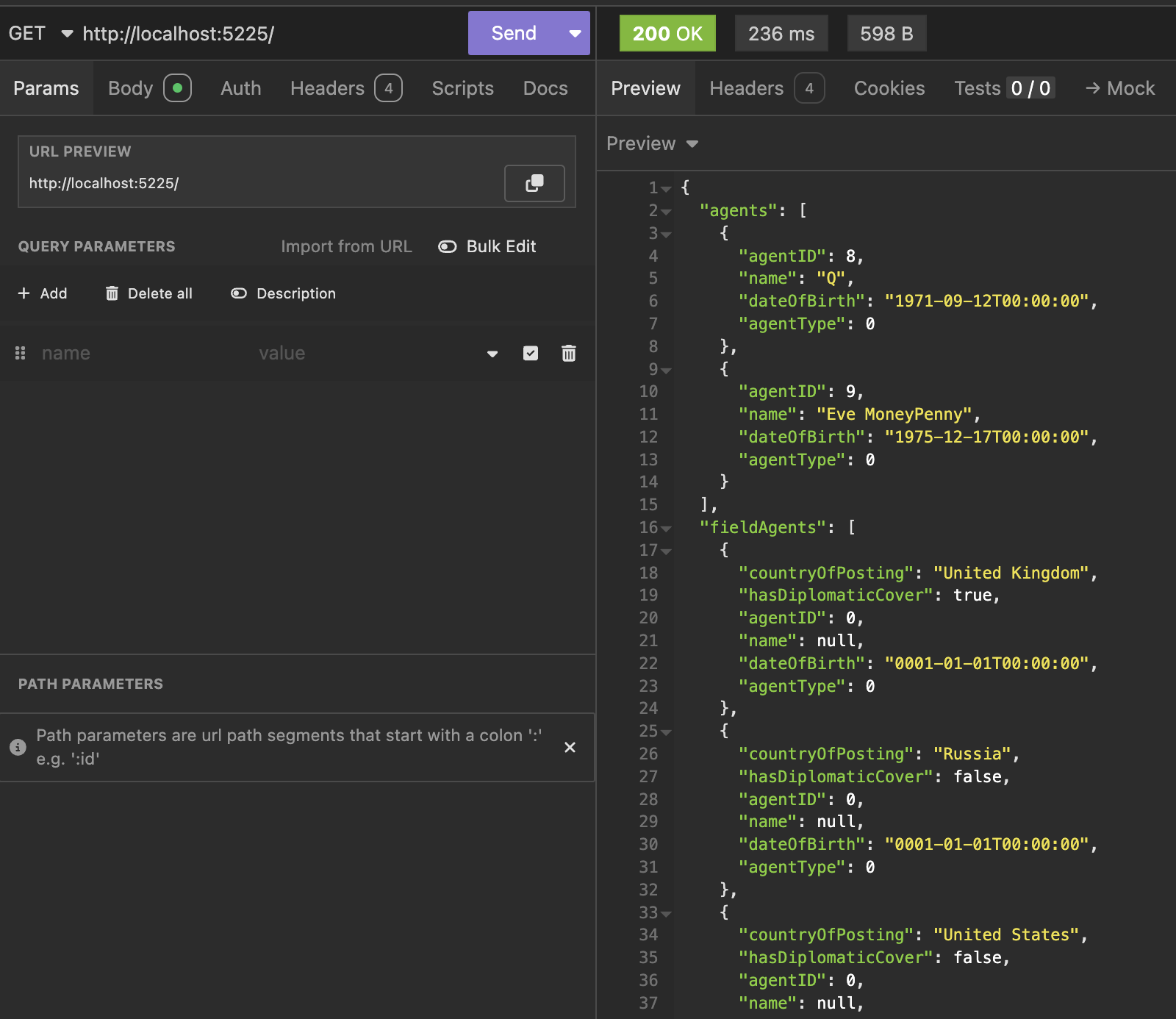Dapper Part 11 - Using Inheritance
[C#, .NET, Dapper, Database]
This is Part 11 of a series on using Dapper to simplify data access with ADO.NET
- Simpler .NET Data Access With Dapper - Part 1
- Dapper Part 2 - Querying The Database
- Dapper Part 3 - Executing Queries
- Dapper Part 4 - Passing Data To And From The Database
- Dapper Part 5 - Passing Data In Bulk To The Database
- Dapper Part 6 - Returning Multiple Sets Of Results
- Dapper Part 7 - Adding DateOnly & TimeOnly Support
- Dapper Part 8 - Controlling Database Timeouts
- Dapper Part 9 - Using Dynamic Types
- Dapper Part 10 - Handling Cancellations
- Dapper Part 11 - Using Inheritance (This Post)
- Dapper Part 12 - Alternative Bulk Insert Technique
- Dapper Part 13 - Using Transactions
- Dapper Part 14 - Multithreading
- Dapper Part 15 - Using The IN Clause
- Dapper Part 16 - Consideration When Passing Parameters
In our last post, we looked at using cancellation tokens to cancel queries.
In this post, we will look at how to use Dapper to support a common design pattern - storing a hierarchy of inheritance in a table called Table Per Class.
Let us take this type, an Agent:
public class Agent
{
public int AgentID { get; }
public string Name { get; } = null!;
public DateTime DateOfBirth { get; }
}
We also have this type, a FieldAgent. This is an Agent that has been posted.
public class FieldAgent
{
public int AgentID { get; }
public string Name { get; } = null!;
public DateTime DateOfBirth { get; }
public string? CountryOfPosting { get; }
public bool HasDiplomaticCover { get; }
}
Looking at these types, we realize that a FieldAgent is a superset of an Agent.
We can refactor the FieldAgent as follows:
public class FieldAgent : Agent
{
public string? CountryOfPosting { get; }
public bool HasDiplomaticCover { get; }
}
What if we were to store these in a database table? The schema would look like this:
| Name | Type |
|---|---|
| AgentID | int |
| Name | nvarchar(250) |
| DateOfBirth | Date |
| CountryOfPosting | nvarchar(100) |
| HasDiplomaticCover | bit |
But just from looking at the data table, how can we tell a FieldAgent from a normal Agent?
We introduce a new field, called a discriminator, for this purpose.
| Name | Type |
|---|---|
| AgentType | int |
We then create an enum to store this:
public enum AgentType
{
Agent,
Field
}
Then we add this new property to our base class:
public class Agent
{
public int AgentID { get; }
public string Name { get; } = null!;
public DateTime DateOfBirth { get; }
public AgentType AgentType { get; }
}
The DDL to create this table is as follows:
CREATE TABLE Agents
(
AgentID INT PRIMARY KEY IDENTITY(1, 1),
Name NVARCHAR(100) NOT NULL,
DateOfBirth DATE NOT NULL,
CountryOfPosting NVARCHAR(100) NULL,
HasDiplomaticCover BIT NULL,
AgentType INT NOT NULL
);
We can seed the data as follows:
INSERT INTO Agents
(
Name,
DateOfBirth,
CountryOfPosting,
HasDiplomaticCover,
AgentType
)
VALUES
(
'James Bond', '1970-04-13', 'United Kingdom', 1, 1
),
(
'Natasha Romanoff', '1984-11-22', 'Russia', 0, 1
),
(
'Ethan Hunt', '1964-08-18', 'United States', 0, 1
),
(
'Q', '1971-09-12', NULL, NULL, 0
),
(
'Eve MoneyPenny', '1975-12-17', NULL, NULL, 0
);
To query and correctly hydrate our objects, we operate as follows:
- Create a connection to the database
- Execute a query and return a reader
- Map the reader to parsers
- Conditionally load the parsers using the reader.
Our endpoint will look like this:
app.MapGet("/", async (SqlConnection cn) =>
{
List<Agent> agents = [];
List<FieldAgent> fieldAgents = [];
const string sql = """
SELECT
Agents.AgentID,
Agents.Name,
Agents.DateOfBirth,
Agents.CountryOfPosting,
Agents.HasDiplomaticCover,
Agents.AgentType
FROM
dbo.Agents;
""";
await using (var reader = await cn.ExecuteReaderAsync(sql))
{
// Declare parsers
var agentsParser = reader.GetRowParser<Agent>();
var fieldAgentsParser = reader.GetRowParser<FieldAgent>();
while (reader.Read())
{
// Read our discriminating column value
var discriminator = (AgentType)reader.GetInt32(reader.GetOrdinal(nameof(AgentType)));
// Use discriminator to parse rows
switch (discriminator)
{
case AgentType.Agent:
agents.Add(agentsParser(reader));
break;
case AgentType.Field:
fieldAgents.Add(fieldAgentsParser(reader));
break;
default:
throw new ArgumentOutOfRangeException(nameof(discriminator), "Invalid agent type");
}
}
}
// Output the results
return new { Agents = agents, FieldAgents = fieldAgents };
});
And our results will be as follows:

TLDR
Dapper allows you to retrieve data stored in a hierarchical tabble in the table per concrete class pattern.
The code is in my GitHub.
Happy hacking!